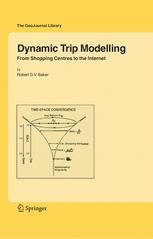

Most ebook files are in PDF format, so you can easily read them using various software such as Foxit Reader or directly on the Google Chrome browser.
Some ebook files are released by publishers in other formats such as .awz, .mobi, .epub, .fb2, etc. You may need to install specific software to read these formats on mobile/PC, such as Calibre.
Please read the tutorial at this link: https://ebookbell.com/faq
We offer FREE conversion to the popular formats you request; however, this may take some time. Therefore, right after payment, please email us, and we will try to provide the service as quickly as possible.
For some exceptional file formats or broken links (if any), please refrain from opening any disputes. Instead, email us first, and we will try to assist within a maximum of 6 hours.
EbookBell Team

5.0
28 reviewsThe thesis of this book is that there are one set of equations that can define any trip between an origin and destination. The idea originally came from work that I did when applying the hydrodynamic analogy to study congested traffic flows in 1981. However, I was disappointed to find out that much of the mathematical work had already been done decades earlier. When I looked for a new application, I realised that shopping centre demand could be like a longitudinal wave, governed by centre opening and closing times. Further, a solution to the differential equation was the gravity model and this suggested that time was somehow part of distance decay. This was published in 1985 and represented a different approach to spatial interaction modelling. The next step was to translate the abstract theory into something that could be tested empirically. To this end, I am grateful to my Ph. D supervisor, Professor Barry Garner who taught me that it is not sufficient just to have a theoretical model. This book is an outcome of this on-going quest to look at how the evolution of the model performs against real world data. This is a far more difficult process than numerical simulations, but the results have been more valuable to policy formulation, and closer to what I think is spatial science. The testing and application of the model required the compilation of shopping centre surveys and an Internet data set.